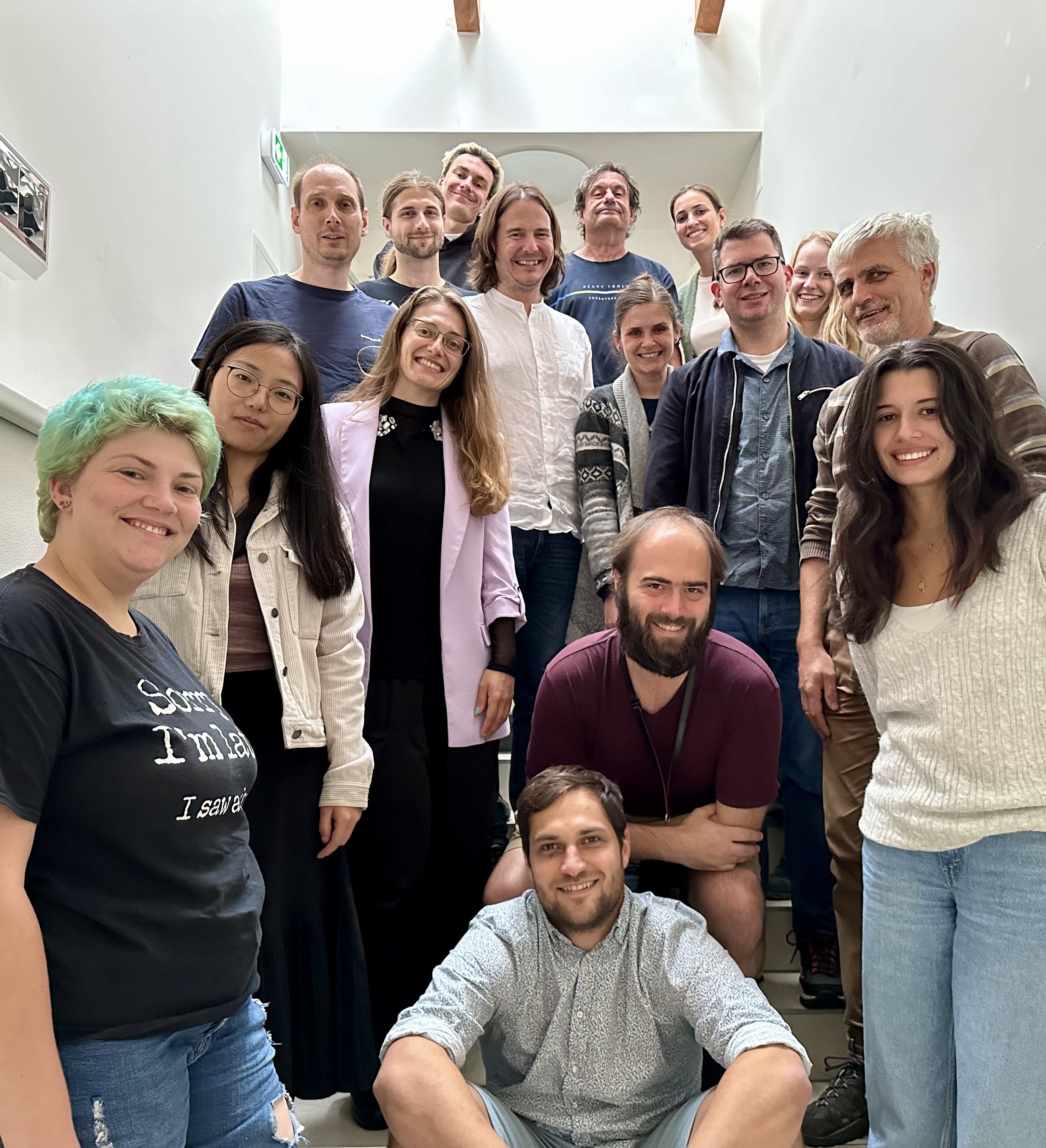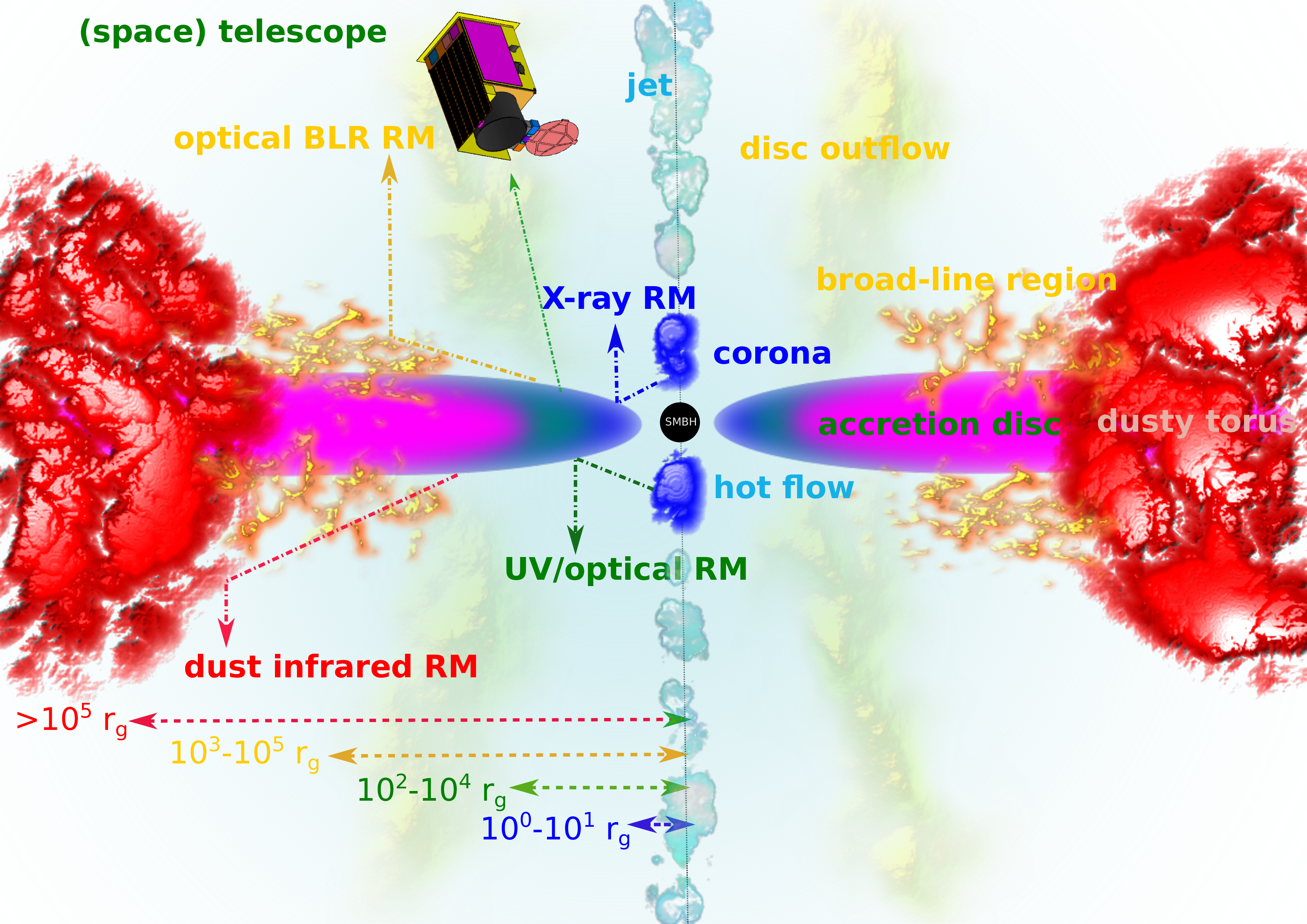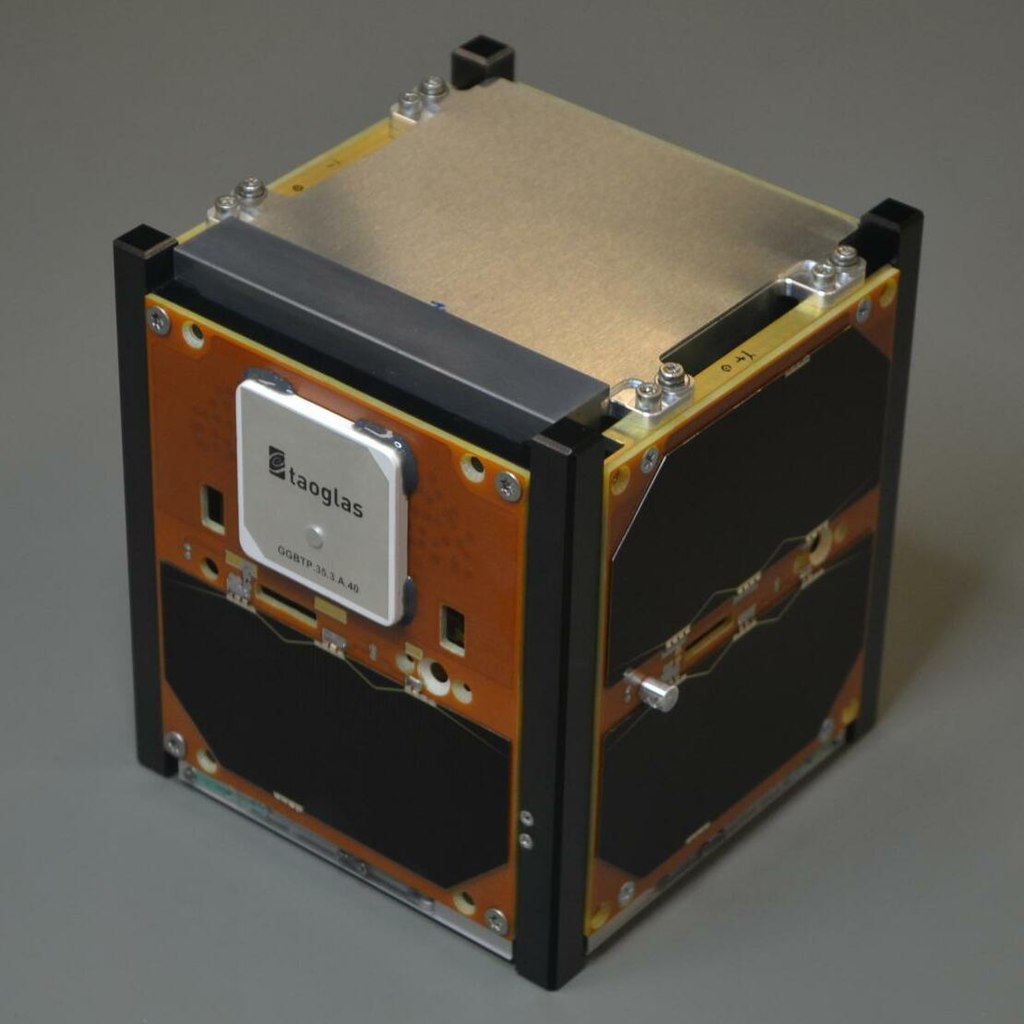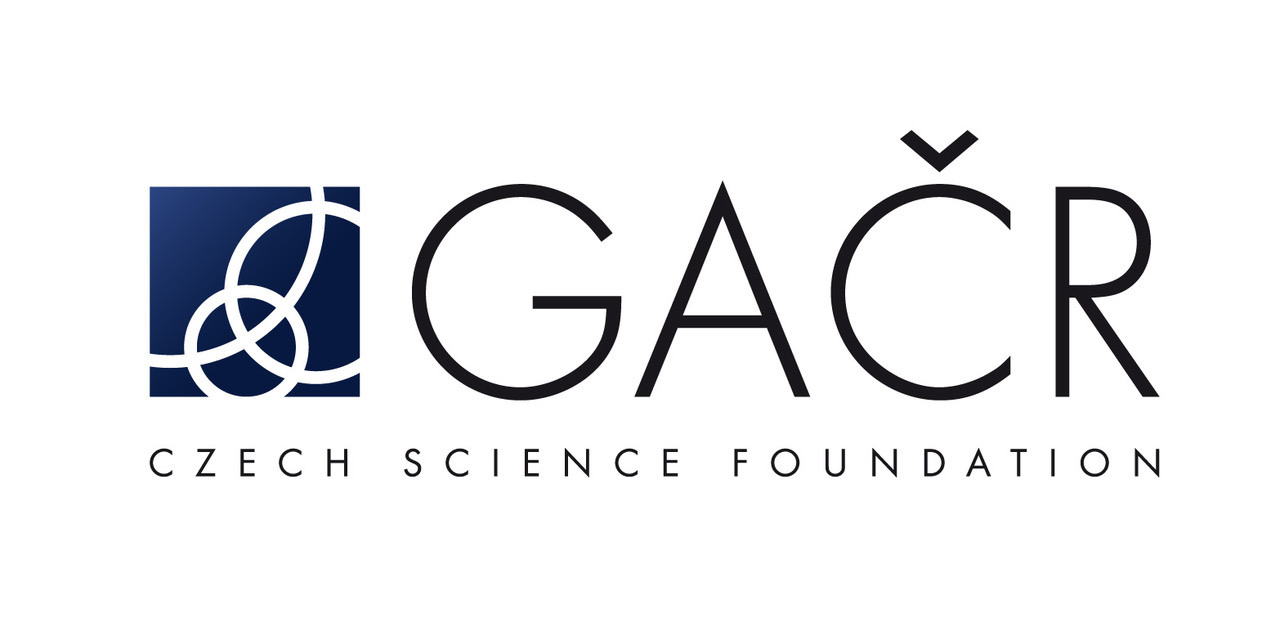High Energy Astrophysics
@ Masaryk University, Brno, Czech Republic
The High Energy Astrophysics Group is a research group in the Department of Theoretical Physics and Astrophysics,
Faculty of Science, Masaryk University, Brno, Czech Republic. We are an international research group focused on the
hot and energetic Universe over multiple wavelengths and physical scales. We bridge observational, theoretical, and
computational fields over a broad array of disciplines.
High Energy Astrophysics
@ Masaryk University, Brno, Czech RepublicThe High Energy Astrophysics Group is a research group in the Department of Theoretical Physics and Astrophysics, Faculty of Science, Masaryk University, Brno, Czech Republic. We are an international research group focused on the hot and energetic Universe over multiple wavelengths and physical scales. We bridge observational, theoretical, and computational fields over a broad array of disciplines.
Studying the Hot Universe
Most of the Universe consists of dark energy and dark matter, which are hidden from our view. However, even most of the “ordinary matter” made of standard-model particles remains unseen and unexplored. In the course of structure formation, only a small fraction of the baryons turned into stars - most remain in the form of a hot, low-density X-ray emitting plasma that permeates massive galaxies, clusters of galaxies, as well as the filaments of the cosmic web.
Ongoing research projects in the group include:
Studies of the role of the hot X-ray emitting plasma and accreting supermassive black holes in galaxy evolution. We use proprietary and public multi-wavelength, mainly X-ray and radio, data to study nearby early-type galaxies to test various predictions of the so-called “precipitation” and black hole feedback models and compare our data with state-of-the-art numerical simulations.
Determining the dynamics, thermodynamics, and chemical composition of the hot plasma by using X-ray and radio observations. Members of our group are involved in the Japanese XRISM mission as guest scientists. We also study mock X-ray observations of state-of-the-art cosmological simulations with existing and planned high-resolution X-ray observatories.
Use of machine learning to study clusters of galaxies and the large-scale structure of the Universe.
Members of our group were involved in the search for supermassive black holes in the earliest massive galaxies discovered by the James Webb Space Telescope (JWST).
Our group also hopes to be a bridge between astrophysics and theoretical physics, exploring exotic phenomena such as the quantum structure of space and microscopic black-holes.
List of publications
Selected Publications focused on Hot Universe
Swift-XRT follow-up analysis of unidentified hard X-ray sources
(adsabs)
UV FeII emission model of HE 0413−4031 and its relation to broad-line time delays
(adsabs)
A Candidate Supermassive Black Hole in a Gravitationally Lensed Galaxy at z ≈ 10
(adsabs)
Extinction biases quasar luminosity distances determined from quasar UV and X-ray flux measurements
(adsabs)
Evidence for heavy-seed origin of early supermassive black holes from a z ≈ 10 X-ray quasar
(adsabs)
Cavity DEtection Tool (CADET): Pipeline for automatic detection of X-ray cavities in hot galactic and cluster atmospheres
(adsabs)
Outskirts of Abell 1795: Probing gas clumping in the intracluster medium
(adsabs)
Ram-pressure stripped radio tail and two ULXs in the spiral galaxy HCG 97b
(adsabs)
Particle-in-cell simulations of electron-positron cyclotron maser forming pulsar radio zebras
(adsabs)
A multifrequency characterization of the extragalactic hard X-ray sky. Presenting the second release of the Turin-SyCAT
(adsabs)
Radio Emission of Nearby Early-type Galaxies in the Low and Very Low Radio Luminosity Range
(adsabs)
Microscopic black holes as probes for quantum gravity
(adsabs)
Eigenvalue-flipping algorithm for matrix Monte Carlo
(adsabs)
Geant4 simulation of the residual background in the ATHENA Wide Field Imager from protons deflected by the Charged Particle Diverter
(adsabs)
Athena charged particle diverter simulations: effects of micro-roughness on proton scattering using Geant4
(adsabs)
The cycle of metals in the infalling elliptical galaxy NGC 1404
(adsabs)
The relation between accretion rate and jet power in early-type galaxies with thermally unstable hot atmospheres
(adsabs)
Hawking-radiation recoil of microscopic black holes
(adsabs)
Exploring Gravitationally-Lensed z > 6 X-ray AGN Behind the RELICS clusters
(adsabs)
Very Large Array Radio Study of a Sample of Nearby X-ray and Optically Bright Early-Type Galaxies
(arXiv)
Enhanced Doppler Beaming for Dust-enshrouded Objects and Pulsars in the Galactic Center
(adsabs)
Ultradiffuse Galaxies in the Coma Cluster: Probing Their Origin and AGN Occupation Fraction
(adsabs)
Multiwavelength classification of X-ray selected galaxy cluster candidates using convolutional neural networks
(adsabs)
The mergers in Abell 2256: displaced gas and its connection to the radio-emitting plasma
(arXiv)
Powerful AGN jets and unbalanced cooling in the hot atmosphere of IC 4296
(adsabs)
Studying Galactic Nuclei
It is now established that most galaxies host at least one supermassive black hole in their centers. Although these massive compact objects with masses of the order of million to billion Solar masses dynamically influence only tiny volumes around them with radii ranging from 0.5 parsec to 100 parsecs, via intense radiation and powerful outflows they can affect star-formation rates and cold gas content within their host galaxies and even beyond on galaxy cluster scales. It is therefore crucial to study black-hole growth processes such as accretion and mergers and how they affect galaxy evolution in the cosmological context.
Ongoing research projects in the Galactic Nuclei group include:
We are studying motion of stars and gas distribution in the vicinity of the supermassive black hole in the center of the Milky Way. We have searched for stars that orbit very closely to Sgr A*, our supermassive black hole. One of the record stars is S4716 that orbits Sgr A* on the scale comparable to the Solar System and one orbit takes only 4 years. One of the mysteries is how these relatively young stars could have formed so close to the supermassive black hole. A potentially key could be provided by still mysterious dust-enshrouded objects that are located similarly close to Sgr A* and exhibit signatures of young stellar objects.

Illustration of the structure of an active galactic nucleus and how we can study it using reverberation mapping across different wavelengths.
We have also been studying the interaction of stars and compact remnants with the accretion flow and nuclear outflows and jets around supermassive black holes. In this regard, we focus on how these smaller perturbing bodies can affect the accretion rate and outflows and if these collisions can significantly affect stellar evolution and the appearance of stars close to the supermassive black hole.
Another pressing question concerns the relation between merger-free processes (observed through galaxy morphology) and supermassive black hole feeding and feedback. In particular, members of our group are investigating the trend of strongly barred galaxies hosting a higher fraction of active galactic nuclei.

Current members of the HEA Galactic Nuclei working group – from the left to the right: Henry Best, Monika Pikhartová, Michal Zajaček, Petr Kurfürst, Izzy Garland, and Matúš Labaj.
We are also interested in the fundamental physics of gravitational theories and black holes, in particular the possibility to test the presence of charged black holes in the Universe and how to use accreting black holes to constrain cosmological models.
To conduct the research projects outlined above, we have received support from the Czech Science Foundation grants: Junior Star grant (GM24-10599M) and Czech-Polish collaboration grant (GF23-04053L).
List of publications
Selected publications focused on Galactic Nuclei
Red giant - jet collisions in galactic nuclei I: 3D hydrodynamical model of a few stellar orbits
(adsabs)
Predicting High Magnification Events in Microlensed Quasars in the Era of LSST using Recurrent Neural Networks
(adsabs)
The Evaporating Massive Embedded Stellar Cluster IRS 13 Close to Sgr A*. II. Kinematic Structure
(adsabs)
Repeating nuclear transients as candidate electromagnetic counterparts of LISA extreme mass ratio inspirals
(adsabs)
Candidate young stellar objects in the S-cluster: Kinematic analysis of a subpopulation of the low-mass G objects close to Sgr A*
(adsabs)
Lense-Thirring precession after a supermassive black hole disrupts a star
(adsabs)
A case for a binary black hole system revealed via quasi-periodic outflows
(adsabs)
UV FeII emission model of HE 0413−4031 and its relation to broad-line time delays
(adsabs)
Alive but Barely Kicking: News from 3+ yr of Swift and XMM-Newton X-Ray Monitoring of Quasiperiodic Eruptions from eRO-QPE1
(adsabs)
Effects of heterogeneous data sets and time-lag measurement techniques on cosmological parameter constraints from Mg II and C IV reverberation-mapped quasar data
(adsabs)
X-ray eruptions every 22 days from the nucleus of a nearby galaxy
(adsabs)
New theoretical Fe II templates for bright quasars
(adsabs)
MAD UFOs: Magnetically Arrested Discs with persistent Ultra-Fast Outflows
(adsabs)
Broad-line region in active galactic nuclei: Dusty or dustless?
(adsabs)
The Evaporating Massive Embedded Stellar Cluster IRS 13 Close to Sgr A*. I. Detection of a Rich Population of Dusty Objects in the IRS 13 Cluster
(adsabs)
Expectations for time-delay measurements in active galactic nuclei with the Vera Rubin Observatory
(adsabs)
Studying the Universe with SmallSats
GRBAlpha, GRBBeta and VZLUSAT-2
Modern space observatories grew into several hundred million Euro missions. However, miniaturisation recently opened new opportunities to monitor and localise gamma-ray bursts with nano-satellites (CubeSats). Our group is involved in the HERMES-SP project and the CAMELOT initiative, including three in-orbit demonstration missions, GRBAlpha, GRBBeta and VZLUSAT-2.
GRBAlpha has been successfully operating in orbit since March 2021 and has detected over one hundred fifty transients; see the list of transients detected by GRBAlpha. VZLUSAT-2 was successfully launched in January 2022 and has detected close to a hundred transients; see the list of transients detected by VZLUSAT-2. GRBBeta was successfully launched in July 2024; see the list of transients detected by GRBBeta. Our research group is leading the data analysis and the scientific exploitation of the GRB detectors on these missions.


Quick Ultra-Violet Kilonovae surveyor (QUVIK)
Our research group has initiated a proposal for a UV space telescope on a ∼130kg small satellite with a moderately fast repointing capability and a near real-time alert communication system. In September 2023, the Quick Ultra-Violet Kilonovae surveyor (QUVIK) mission was approved for funding as a national Czech ambitious science and technology mission. QUVIK shall measure the brightness evolution of kilonovae, resulting from the mergers of neutron stars, in the near-UV band to distinguish between different explosion scenarios. Between the observations of transient sources, the satellite shall perform observations of other targets of interest. The project is led by the Aerospace Research Centre VZLU, which is also responsible for the platform design. Our research group, together with a broader community of mostly Czech astrophysicists, leads the scientific preparations, including the definition of the scientific objectives and requirements.
List of publications
Selected publications about CubeSats and SmallSats
Checkout lists of transients detected by GRBAlpha and VZLUSAT-2.
HERMES: Gamma Ray Burst and Gravitational Wave counterpart hunter
(adsabs)
The HERMES (High Energy Rapid Modular Ensemble of Satellites) Pathfinder mission
(adsabs)
GRBAlpha and VZLUSAT-2: GRB observations with CubeSats after 3 years of operations
(adsabs)
Science with a small two-band UV-photometry mission I: Mission description and follow-up observations of stellar transients
(adsabs)
Science with a small two-band UV-photometry mission II: Observations of stars and stellar systems
(adsabs)
Science with a small two-band UV-photometry mission III: Active Galactic Nuclei and nuclear transients
(adsabs)
Localisation of gamma-ray bursts from the combined SpIRIT+HERMES-TP/SP nano-satellite constellation
(adsabs)
GRBAlpha: the smallest astrophysical space observatory - Part 1: Detector design, system description and satellite operations
(adsabs)
The peak-flux of GRB 221009A measured with GRBAlpha
(adsabs)
Early results from GRBAlpha and VZLUSAT-2
(adsabs)
Quick Ultra-VIolet Kilonova surveyor (QUVIK)
(adsabs)
Detection of Low-Energy X-rays Using YSO Scintillation Crystal Arrays for GRB Experiments
(adsabs)
Distributed Architectures and Constellations for γ-ray Burst Science
(adsabs)
GRBAlpha: a 1U CubeSat mission for validating timing-based gamma-ray burst localization
(PDF)
Simulations of expected signal and background of gamma-ray sources by large field-of-view detectors aboard CubeSats
(PDF)
Public Outreach and Podcasts
Events
Galaxies at Crossroads: Outflows and IMF in the VLT/ELT/ALMA/JWST Era
September 16 - 20 2024eso.org/sci/meetings/2024/galcross.html
Galactic Nuclei in the Cosmological Context
June 3 - 6 2024gnc2024.physics.muni.cz/
Monitoring the high-energy sky with small satellites
September 6 - 8 2022grbnanosats.physics.muni.cz
Cologne-Prague-Brno meeting - CPB 2022
June 1 - 3 2022cpb2022.physics.muni.cz
Contact Us
High Energy Astrophysics Group
Department of Theoretical Physics and Astrophysics
Kotlářská 267/2, 611 37, Brno
Czech Republic



